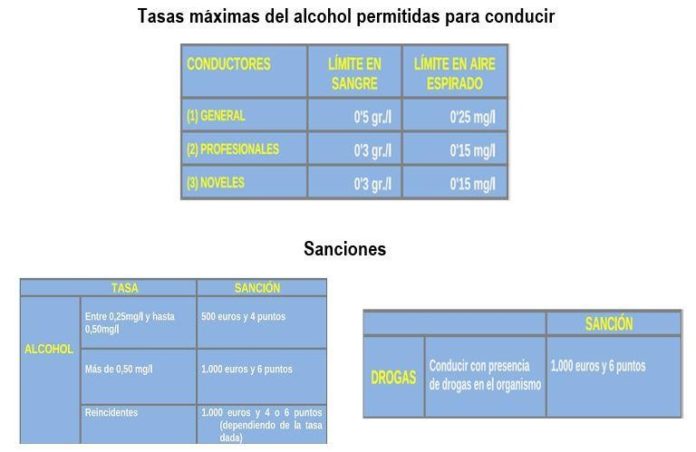In the run up to Christmas, when a large number of gatherings are held with family and friends in which alcohol is usually present, it is important to remember that, while driving, the only safe rate is 0.0%. That is why the Dirección General de Tráfico (DGT), as part of a Europe-wide campaign, will focus the attention on the consumption of alcohol and drugs before driving.
For this reason, the director of the National Road Safety Observatory, Álvaro Gómez, presented the latest campaign which will run until Sunday, December 17, and in which will intensify surveillance on the risk posed by the combination of alcohol and/or drug consumption and driving.
In the presentation, Gómez recalled that “the consumption of alcohol and other drugs must be addressed through comprehensive public health policies. From the field of traffic and road safety, we will reinforce awareness and surveillance actions to reduce the impact on traffic accidents”.
To do this, the agents of the Traffic Group of the Guardia Civil (ATGC), as well as the local police forces that join the campaign, will establish different control points on all types of roads, as well as in urban areas, at any time of day with the aim of preventing people who have consumed alcohol or drugs from traveling on the roads.
Risk factor
Alcohol consumption remains the second most frequent concurrent cause in traffic incidents, having been present in 14% of traffic incidents with victims in 2022 and, as a concurrent factor, in 29% of those that recorded fatalities.
Furthermore, as can be seen in the 2022 Report on Toxicological Findings in Traffic Accident Victims prepared by the National Institute of Toxicology and Forensic Sciences with the collaboration of the National Road Safety Observatory, more than half (51.9%) of the drivers who died on the road in 2022, who underwent an autopsy and a toxicological analysis, tested positive for alcohol, drugs or psychotropic drugs, alone or in combination. A worrying figure if we also take into account that it represents 2.5% more than the previous year.
The Report also highlights that 72.6% of the 451 deceased drivers with positive results had a very high blood alcohol level, equal to or greater than 1.2g/L, which correlates with degrees of very severe intoxication.
For its part, the Spanish Road Safety Strategy 2030 indicates as one of its strategic areas “Zero tolerance for risky behaviours”, which identifies the behaviour of alcohol and other drug consumption as conduct contrary to road safety. Therefore, campaigns like this one, which increase the impact of surveillance through better planning and also enhance the surveillance of higher-risk behaviours through the application of new technologies, are priority lines of action.
Regulations on alcohol and drugs
As previously mentioned, the DGT insists once again on remembering that the only safe rate is 0.0% since, even with blood alcohol levels within the permitted legal margins, our risk of causing an incident can be seen to increase.
Furthermore, 0.0% is the rate, both in blood and exhaled air, that underage drivers who drive any vehicle must respect after the entry into force of the reform of the Traffic and Road Safety Law.
For its part, Chapter IV of Title XVII of the Penal Code classifies crimes against traffic safety and establishes the penalties for driving with excess alcohol or under the influence of toxic drugs, narcotics or psychotropic substances.

At this point, it is also important to highlight that, according to data from the Road Safety Prosecutor’s Office for 2022, that year there was an uptick in road crime, which translated into 59,461 convictions for crimes of driving under the influence of alcohol and/or or drugs, the highest figure in the entire historical series since the reform of the Penal Code carried out by Organic Law 15/2007.
Specifically, last year the Public Prosecutor’s Office presented a total of 105,078 indictments for dangerous road crimes, the courts handed down 104,660 convictions and 137,406 proceedings were initiated for crimes against road safety, which represents an increase of 9.1 % compared to the previous year.
Furthermore, since the entry into force of the Points Permit, around 13% of the offenders sanctioned and 13% of the points deducted have been related to the fact of driving with an alcohol level higher than the established one.
The post Intensified checks for alcohol and drugs first appeared on N332.es – Driving In Spain.





